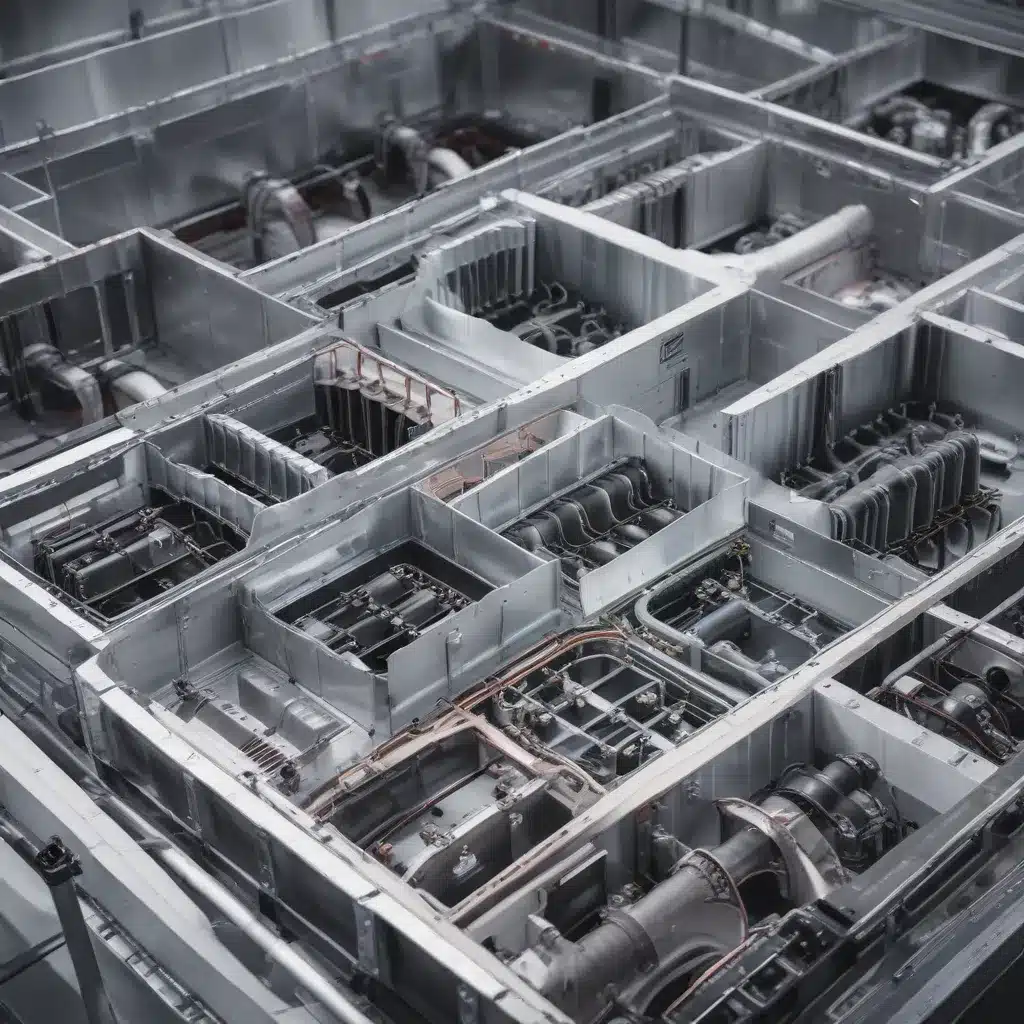
The Evolving Landscape of Air-Cooled Heat Exchangers
As global energy demands continue to rise and the urgent need to address climate change becomes increasingly apparent, the role of air-cooled heat exchangers in driving sustainable thermal management solutions has never been more crucial. These versatile and efficient systems, which harness the natural power of air to dissipate heat, are at the forefront of the industry’s efforts to optimize energy consumption and reduce environmental impact.
In this comprehensive article, we will delve into the advanced strategies and cutting-edge technologies that are transforming the world of air-cooled heat exchangers. From innovative design principles and material advancements to enhanced maintenance practices and cross-industry applications, we will equip you with the knowledge and insights to navigate the ever-evolving landscape of thermal management for a sustainable future.
Designing for Optimal Performance and Efficiency
At the heart of air-cooled heat exchanger optimization lies the careful consideration of design parameters. By meticulously engineering these components, industry experts can unlock remarkable improvements in thermal performance and energy efficiency.
One key area of focus is the optimization of fin design. Researchers have explored novel fin configurations that enhance heat transfer rates, such as wavy, louvered, or interrupted fins. These innovative geometries not only increase the surface area for heat dissipation but also promote turbulent airflow, leading to more effective heat exchange. Additionally, the integration of advanced materials, such as high-conductivity alloys or nanomaterials, can further boost the thermal performance of air-cooled heat exchangers.
Another crucial aspect is the optimization of airflow patterns within the heat exchanger. Computational fluid dynamics (CFD) simulations have become invaluable tools in this regard, enabling the visualization and analysis of air movement and temperature distribution. By leveraging these advanced modeling techniques, engineers can identify and address flow obstructions, enhance air velocity, and maximize the heat transfer coefficient – all while minimizing pressure drop and energy consumption.
Embracing Innovative Cooling Strategies
Beyond the realm of design optimization, the field of air-cooled heat exchanger technology is witnessing the emergence of innovative cooling strategies that are reshaping the industry.
One such approach is the integration of phase change materials (PCMs) into the heat exchanger system. These materials, which undergo phase transitions (e.g., solid-to-liquid) at specific temperature ranges, can effectively absorb and store excess heat during peak loads, subsequently releasing it during periods of lower demand. By acting as thermal buffers, PCMs can help maintain optimal operating temperatures, enhance system reliability, and reduce the risk of thermal overloads.
Another promising cooling strategy is the advent of direct liquid cooling systems. In this approach, the heat exchanger coils are immersed in a dielectric fluid, which efficiently transfers heat away from the system. This method not only demonstrates superior cooling performance but also offers the potential for reduced energy consumption and a more compact system design.
As the industry continues to push the boundaries of thermal management, the integration of advanced materials, cutting-edge modeling techniques, and innovative cooling strategies will play a pivotal role in propelling air-cooled heat exchanger technology towards a more sustainable and efficient future.
Optimizing Maintenance and Monitoring for Peak Performance
Alongside advancements in design and cooling strategies, the effective maintenance and monitoring of air-cooled heat exchangers are crucial for ensuring their long-term performance and reliability.
Regular inspections and preventive maintenance practices, such as cleaning the air-side surfaces, addressing fouling and corrosion, and monitoring critical components, can significantly extend the service life of these systems. By proactively identifying and addressing potential issues, maintenance teams can prevent unexpected breakdowns, minimize downtime, and optimize energy efficiency.
Moreover, the integration of smart monitoring technologies has revolutionized the way air-cooled heat exchangers are maintained. Sensor-based systems can continuously track parameters like airflow, temperature, vibration, and pressure, providing real-time insights into the system’s performance. This data-driven approach enables predictive maintenance, allowing operators to anticipate and address problems before they arise, further enhancing the overall reliability and efficiency of the heat exchanger.
Embracing Cross-Industry Applications
The versatility of air-cooled heat exchangers has led to their widespread adoption across a diverse range of industries, each presenting unique thermal management challenges and opportunities for innovation.
In the power generation sector, air-cooled heat exchangers play a crucial role in the cooling of turbines, generators, and other critical equipment, ensuring optimal performance and reliability. Advancements in materials and design have enabled these systems to operate effectively even in harsh environments, contributing to the overall efficiency and sustainability of power plants.
Within the chemical and petrochemical industries, air-cooled heat exchangers are employed for a variety of processes, including the cooling of reactors, condensers, and distillation columns. By tailoring the design and materials to suit specific process requirements, engineers can enhance heat transfer rates, minimize energy consumption, and ensure compliance with stringent safety and environmental regulations.
In the rapidly growing data center sector, air-cooled heat exchangers are playing a pivotal role in the quest for sustainable cooling solutions. As data center operators strive to reduce their environmental footprint, the adoption of advanced air-cooling technologies has become increasingly prevalent, enabling them to manage the ever-increasing heat loads while minimizing energy usage and water consumption.
Embracing the Future: Towards Sustainable Thermal Management
As we look towards the future, the role of air-cooled heat exchangers in driving a more sustainable and energy-efficient tomorrow is more vital than ever. By embracing the latest advancements in design, materials, and cooling strategies, industry professionals can unlock unprecedented levels of thermal management performance, all while minimizing the environmental impact.
At the Air Cooled Heat Exchangers blog, we are committed to sharing the latest insights, technical expertise, and practical guidance to help our readers navigate the ever-evolving landscape of air-cooled heat exchanger technology. Whether you’re an engineer, operator, or decision-maker, our comprehensive resources will empower you to make informed choices that contribute to a more sustainable future.
Join us as we explore the cutting edge of thermal management, where innovation, efficiency, and environmental stewardship converge to shape a brighter, more sustainable tomorrow.

